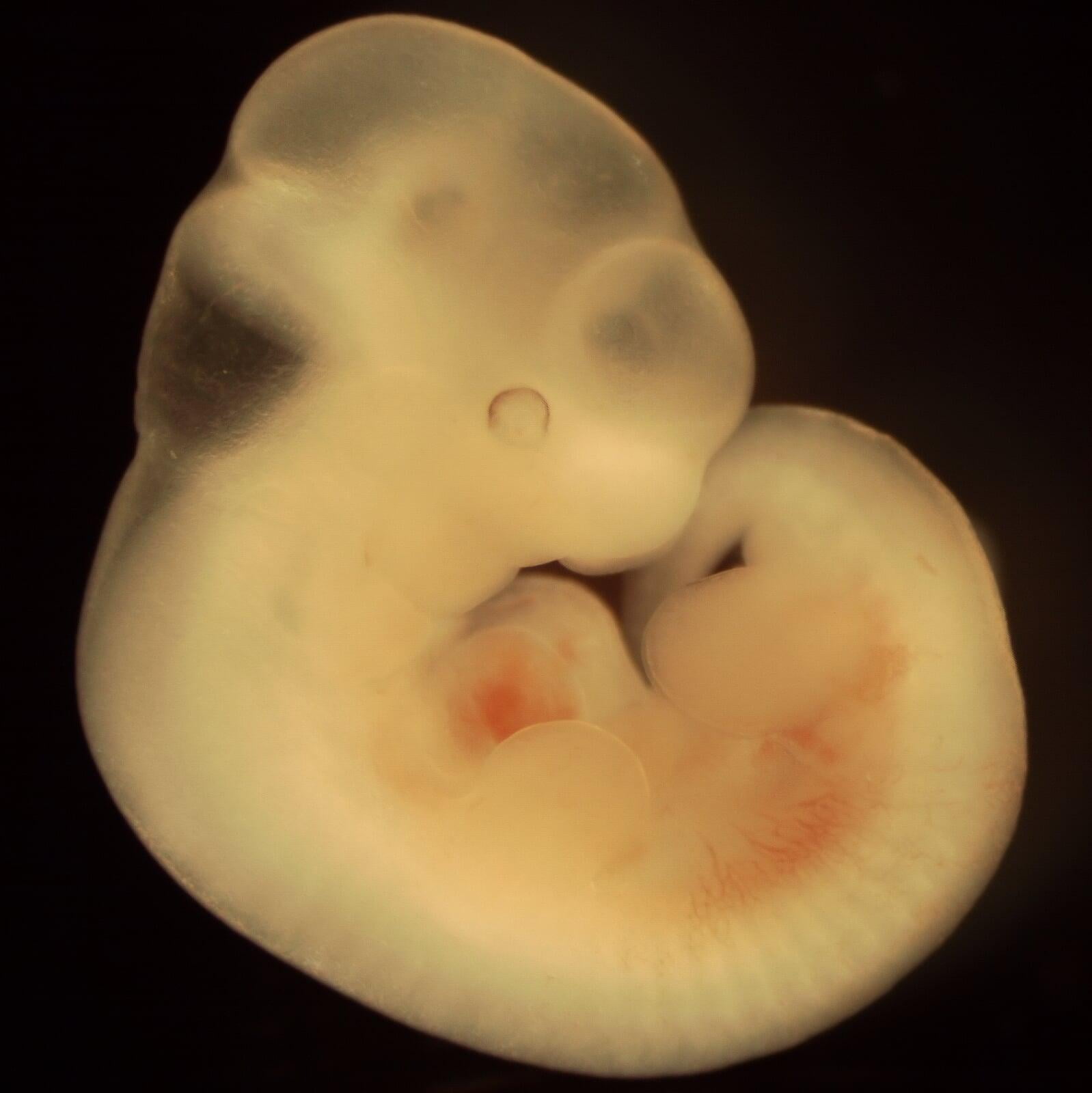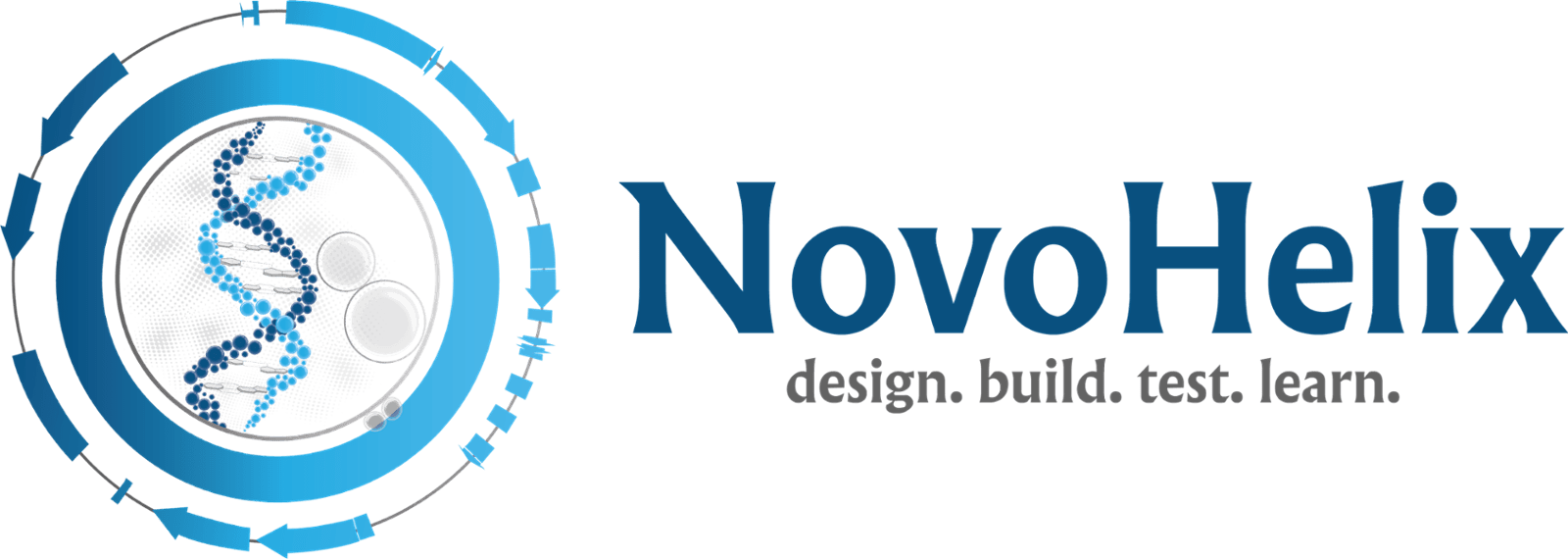
ES cells—gene targeting
The confluence of two groundbreaking technologies led to the first gene-targeted mouse models: plasticity of embryonic stem cells that contribute to the germline¹,² and successful homologous recombination³,⁴,⁵ between the ES cell genome and an introduced DNA sequence typically known as a targeting vector. Gene targeting has been applied to understand mammalian physiology, to study human disease mechanisms, and pervaded biomedicine to create precision therapeutics. NovoHelix provides a variety of options for engineering the desired genetic modification into your model. Our full service projects include the entire mouse model generation process from scoping out the design strategy and targeting vector construction to delivery of the mutant animal model. We also provide options to clients for subcontracting certain experimental workflows or phases of the project to us and many of these service descriptions are provided under our Support Services tab. A detailed cost estimate can be developed based on your specific project through our online Quote Request.
Service
Catalog Nr
Service Description
Timeline
Deliverables
Pricing
- Full Service 129P2/Ola Gene Targeting Project
- vector construction, ES cell targeting and screening, chimera generation
~7 - 8 weeks from time of blastocyst injection.
2 gene targeted founders or 50 liveborn pups (if expression of the targeted allele would lead to embryonic or perinatal lethality) whichever comes first
- Full Service C57BL/6N Gene Targeting Project
- vector construction, ES cell targeting and screening, chimera generation
C57BL/6 strain transgene pronuclear microinjection
~7 - 8 weeks from time of blastocyst injection.
2 gene targeted founders or 50 liveborn pups (if expression of the targeted allele would lead to embryonic or perinatal lethality) whichever comes first
- Full Service BALB/cJ Gene Targeting Project
- vector construction, ES cell targeting and screening, chimera generation
~7 - 8 weeks from time of blastocyst injection.
2 gene targeted founders or 50 liveborn pups (if expression of the targeted allele would lead to embryonic or perinatal lethality) whichever comes first
- KOMP ES cell validation and injection package
- Southern blot validation and blastocyst injection for chimera generation
C57BL/6 strain transgene pronuclear microinjection
~7 - 8 weeks from time of blastocyst injection.
2 gene targeted founders or 50 liveborn pups (if expression of the targeted allele would lead to embryonic or perinatal lethality) whichever comes first
Service
Catalog Nr
Service Description
Timeline
Deliverables
Pricing
1- 4 weeks depending on targeting vector complexity
5-10 micrograms of isogenic gene targeting plasmid; sequence validation, in silico map and 3 digests for restriction fingerprinting overall structure.
- ES cell 2nd Electroporation
- 129P2/Ola ES Cells
- Cre/Flpo
2 - 4 weeks
3 validated clones post excision
- ES cell 2nd Electroporation
- C57BL/6N ES Cells
- Cre/Flpo
2 - 4 weeks
3 validated clones post excision
- ES cell 2nd Electroporation
- BALB/cJ ES Cells
- Cre/Flpo
2 - 4 weeks
3 validated clones post excision
- ES cell 2nd Electroporation
- NOD/SCID-Il2rg-null ES Cells
- Cre/Flpo
2 - 4 weeks
3 validated clones post excision
- ES cell expansion and preparation for microinjection
- service includes up to 3 clones; client-provided ES cells without feeders
- ES cell expansion and preparation for microinjection
- service includes up to 3 clones as recommended for KOMP/EUCOMM cells or
- client-provided ES cells feeder-dependent
- Blastocyst microinjection
- C57BL/6-albino blastocysts
NovoHelix provides mycoplasma testing using a multiplex 16S rRNA gene assay to broadly determine adventitious mycoplasma species infection. This service fee is per mouse ES cell (mESC) clone. The assay detects over 60 species of Mycoplasma, Acholeplasma, Spiroplasma and Ureaplasma including the eight species most likely to afflict cell cultures: M. arginini, M. fermentans, M. hominis, M.hyorhinis, M. orale, M. pirum, M. salivarium, and A. laidlawii.
Re-derive a ES cell line from mouse blastocysts, including ESC karyotype and sex determination. All mESC lines are derived under 2i or 3i media. We provide service of mouse ES cell lines derivation from the strain of choice or background of your mouse line.
A genotyping strategy is provided for the removal of the selection cassette and an additonal strategy to monitor the targeted allele
2: Martin GR. Isolation of a pluripotent cell line from early mouse embryos cultured in medium conditioned by teratocarcinoma stem cells. Proc Natl Acad Sci U S A. 1981 Dec;78(12):7634-8. PubMed PMID: 6950406; PubMed Central PMCID: PMC349323.
3: Thomas KR, Capecchi MR. Site-directed mutagenesis by gene targeting in mouse embryo-derived stem cells. Cell. 1987 Nov 6;51(3):503-12. PubMed PMID: 2822260.
5: Smithies O. Forty years with homologous recombination. Nat Med. 2001 Oct;7(10):1083-6. PubMed PMID: 11590419.


